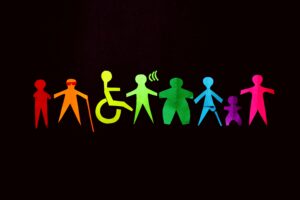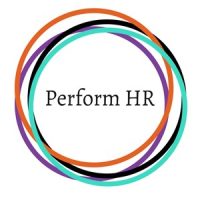
June is LGBT Pride Month. It’s a month of acceptance, equality and celebrating LGBTQ+ people. Whether you celebrate Pride Month in your company or not, promoting equality, inclusivity and diversity is an essential aspect of good people management.
There are several laws pertaining to Equality, Diversity and Inclusion in the workplace, but the main UK legislation is the Equality Act 2010. This act is the legal framework for protecting individuals from unfair treatment and as an employer you must ensure that your processes and policies comply with it. Failure to comply can result in a claim of unlawful discrimination, which could lead to tribunal.
Key provisions and obligations as an employer under the Equality Act 2010, in a nutshell:
- Providing Equal Opportunities: employers must ensure that they treat all employees fairly, giving them the same access to training, development, and promotion.
- Preventing Harassment and Persecution: employers must take steps to prevent harassment in the workplace and they are legally required to respond appropriately to any such allegations or incidents.
- Making Reasonable Adjustments: you are required to make any changes necessary to reduce or remove a disadvantage that relates to someone’s disability.
- Prohibiting Discrimination: employers must not discriminate against employees or potential employees based on any of the nine protected characteristics.
- Record Keeping: Employers must keep records of any discrimination-related complaints.
Why prioritise diversity?
Modern Britain is a melting pot of diversity; each person bringing a whole range of experiences, talents, and perspectives, but having an effective ED&I strategy goes beyond mere legal compliance, and will likely have a hugely positive impact on your business:
- Obeying the Law: It seems obvious, doesn’t it? But it is illegal to discriminate in the workplace based on a person’s protected characteristics. Knowing the law and having a commitment to a diverse workforce will ensure you stay compliant.
- Improving Decision-making, Creativity and Innovation: It stands to reason that a group of similar people are going to make similar decisions. Throw in some people with different experiences of life and some broader perspectives and you have yourself a more diverse team. Imagine the innovation that could bring to your business!
- Improving Company Culture: A company that values equality, diversity and inclusion will have a more inclusive culture and environment. Not only will employees feel respected and valued, but a company with an ethos of respecting minorities and having a diverse workforce could also attract a wider range of customers.
- Attracting Talent and Reducing Employee Turnover: According to Deloitte (2019), companies that prioritise diversity and inclusivity have lower staff attrition, improved employee satisfaction and higher engagement levels.
- Increasing Productivity: Diversity and productivity go hand in hand. Research has found that diversifying your team can boost productivity by up to 35%. A more diverse workforce is more likely to understand your customers’ needs and be better equipped to fulfil them.
Unconscious bias
Hopefully you are reading this article feeling confident that your workplace and policies are fully inclusive; comfortable that equality underpins your processes and practice. But what about unconscious bias? Unconscious biases work under the surface of our thinking, without us even realising they’re there. You may, unthinkingly, have a preference based on past life experiences or on misinformation and stereotypes, and this could have a subconscious negative effect on your decision making.
Unlike discrimination, unconscious bias, also known as implicit bias, is not legislated against, however it is still unacceptable in the workplace.
Unconscious bias can influence anyone at any time, however there are two distinct times that it is more likely to happen in the workplace: when considering people for promotion or professional development and during the hiring process. Managers affected by unconscious bias select people based on a stereotype or misinformed opinion, rather than a candidate’s performance, skills, or experience.
So, what are the common unconscious biases?
- Affinity bias: the idea that people are drawn to people most like themselves.
- Beauty bias: judging a person on how they look rather than their merit as an employee and their professional successes and achievements.
- Name bias: happens when a person forms a prejudgement based entirely on a name.
- Ageism: is stereotyping individuals because of their age picking young, driven employees rather than older, experienced ones, because of the stereotype that older people are less productive.
- Height and weight bias: like beauty bias; the action of judging others who are shorter, taller, heavier, or lighter than average.
- Conformity bias: is the tendency to change one’s opinion, behaviour, or belief to fit in with other people’s opinion, behaviour, or belief.
Being aware of unconscious bias is a good start in avoiding it in the workplace, however there are other ways to ensure that unconscious bias does not play any part in your company:
- Have more than one person sifting applications, interviewing, and making decisions on promotions and new employees.
- Be open and honest with each other in the recruitment process; call each other out if you notice unconscious biases or stereotypes creeping in.
- Remove identifying information such as applicants’ names, ages, or sex to ‘blind sift’ application forms.
- Place job advertisements in at least two different places to reach a wider range of people from different backgrounds.
- Keep detailed records of why decisions were made.
Intersectionality and the workplace
In many workplaces, the term intersectionality is becoming more popular in discussions of diversity and inclusion. Intersectionality, a term coined by Professor Kimberlé Crenshaw in 1989, is one of main theories that organisations use in considering their approach to equality. Intersectionality is the idea that race, gender, sexual orientation, disability, religion, age, ethnicity, class and other characteristics all intersect and overlap with each other, further affecting the experiences – of both oppression and privilege – of marginalised people. Crenshaw described it as ‘a prism for seeing the way in which various forms of inequality often operate together and exacerbate each other’.
According to The Fawcett Society study (2017), ‘women of most minority ethnic groups experience a gender pay gap compared to men of the same ethnicity – Indian women experience the widest full-time gender pay gap of this type (16.1%)’, meanwhile, ‘women from almost every minority ethnic group experience a pay gap with white British men, with the largest disparity being a 19.6% gap for Black African women’.
This information, however, is difficult to come by. Whilst UK companies with over 250 employees have had to report their gender pay gap data annually since 2018, no such robust information is available for other minority characteristics. In their Ethnicity Pay Gap Report (2021), PWC state that ‘without meaningful intersectional data in large government datasets, meaningful analysis will not be possible’. But you can do your bit, and understanding the barriers faced by your workforce is crucial to any equality policy. To support your diverse culture, you should ensure that your inclusion efforts are intersectional. It is no longer enough to focus on one type of discrimination at a time; people themselves are not one dimensional and the discrimination faced by a person, for example, a black woman, is greater than the sum of sexism and racism.
Building a truly inclusive and equitable workplace
Educating yourself on intersectionality will help you to build a truly inclusive and equitable workplace. Intersectionality will help you shape your initiatives to account for the experiences of your workforce, and ultimately it will enable you to fight injustice, bias and discrimination to provide a positive employee experience and a workplace where people feel welcomed, respected and supported regardless of their characteristics. It is no longer enough to offer the highest salary or the most attractive package to attract the best people: a 2020 McKinsey survey found that 39% of those surveyed decided not to take a job because they perceived the organisation lacked an inclusive environment. Equality is important.
“To be a fully inclusive employer, it is vital to acknowledge the intersecting identities of your employees and their experiences and understand how this impacts their life in your company. Only once you have this information in hand, can you design and create a truly inclusive culture and environment. Your staff will thank you by being happier, more engaged and more productive; spreading the word of their forward-thinking and inclusive employer.”
Mika Psyllaki, Managing Director, Perform HR
Perform HR offers a variety of services and strategies including an initial evaluation of the current level of inclusivity, diversity and equality of your business. We can then offer workable solutions including bespoke ED&I coaching, tailoring a plan that will work in the best way for your company and its employees. Get in touch today and start your journey to a more inclusive workplace.

